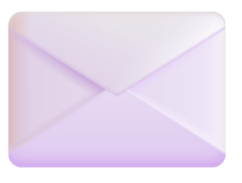E-mail marketing is still one of the most successful digital marketing channels. The average return on investment is around 36 dollars for every dollar spent. E-mail marketing is successful because it is one of the least expensive digital marketing tools; it is easy to learn and easy to track. E-mail marketing is personalizable, direct, and easy to understand for any consumer. In the age of AI, e-mail marketing can become more efficient by using AI tools to improve customer segmentation, personalization, and content creation. To learn more about e-mail marketing, read this page. Visit Really Good Emails, Email Love, and Good Email Copy to find inspiration.
Types of e-mail Campaigns

Welcome
A welcome email sets the tone for your relationship. It should be personal and informative without a heavy sales pitch, catering to potential leads who are open to learning more about your offerings.

Newsletters
When creating newsletters, focus on brand awareness, send them regularly with good design, and represent your brand through consistent use of colors, fonts, and logos. Clearly indicate calls to action.

Offers
Before crafting an email, understand what you’re promoting and the campaign’s goal. Promotional emails should highlight value to communicate what the customer stands to gain.

Re-engage
A cart abandonment email reminds customers to complete their purchase. In contrast, re-engagement emails target dormant users to reignite their interest with messages like “we miss you” and incentives to return. The goal is to win back customers with declining interest in your product or service.

Leads
Send lead-nurturing emails to potential customers based on their interests and concerns. These emails should educate, entertain, or inspire recipients without being sales pitches.

Milestones
Send milestone emails on specific dates, like birthdays or anniversaries. Also, send announcement emails to generate interest in new collections, collaborations, or exciting events.
Strategy
Goals
What do you want to achieve with this campaign? What action do you want recipients to take?
Each email should have a specific goal and call to action. Identify your goals in relation to your organization’s marketing objectives and key performance indicators.
Audience
Your audience will dictate aspects of your campaign development.
Segment your audience by location, age, preferences, sign-up method, or relationship with your organization. We’ll explore segmentation in our CRM system.
Schedule
Determine the best time to schedule your campaign.
Remember to deliver messages consistently to build trust. Ask subscribers how often they want to hear from you, and use an editorial calendar to track timing.
Measure
A KPI or key performance indicator is a metric that measures performance against a goal. When thinking about KPIs, choose those that match the goals you established.
E-mail Tips
Personalization
Personalization increases email open rates. Add the user’s name or company name in the subject line. The subject line should be actionable and urgent, and you should communicate your offer. For example:- The North Face: “Before you head for the hills, explore our latest.”- Tea Drops: “A Little Welcome from Tea Drops Inside!”
Preview Text
The email preview text complements the subject line and provides additional details about the email content. It should entice readers to open the message by creatively expanding on the benefits and generating excitement.
Call to Action
CTA, which stands for call to action, prompts email readers to take a specific action. It’s usually a clickable hyperlink or button at the end of the email, clearly communicating what the user should do. Avoid including too many CTAs in one email. Some examples of CTAs are “Buy now,” “Add to Cart,” “Sign Up,” “Start your trial,” and “Support us.”
Automated E-mail Workflows
E-mail marketing campaigns are the most effective when they are part of a marketing automation. An email marketing workflow is a series of automated emails sent to subscribers based on their actions or behavior. Workflows are triggered by events, such as signing up for your email list, abandoning a shopping cart, or downloading a template from your site. Email marketing workflows can help to onboard new subscribers, nurture leads, convert leads into customers, and retain customers. Most e-mail marketing tools and CRM systems allow businesses to set up automated workflows.

This is an example of an automated workflow in Hubspot. To create this workflow, we need to create a form that subscribers can fill out to join your email list. The form should include at least the subscriber’s name and email address. Once the form is connected, we will create the automated workflow. The workflow should include a series of emails that will be sent to new subscribers over some time. The first email in the workflow should be a welcome email that introduces the subscriber to your brand and products or services. Subsequent emails can be used to provide additional information about your brand, offer special discounts or promotions, or collect feedback from subscribers.
